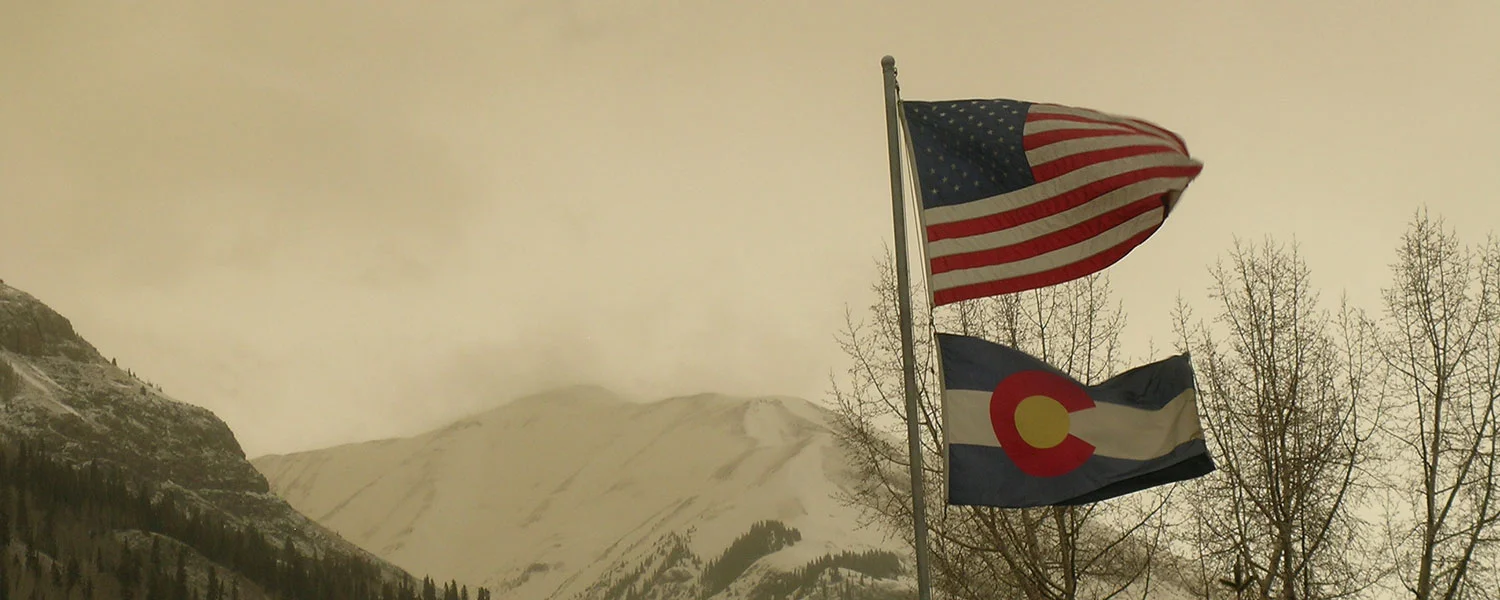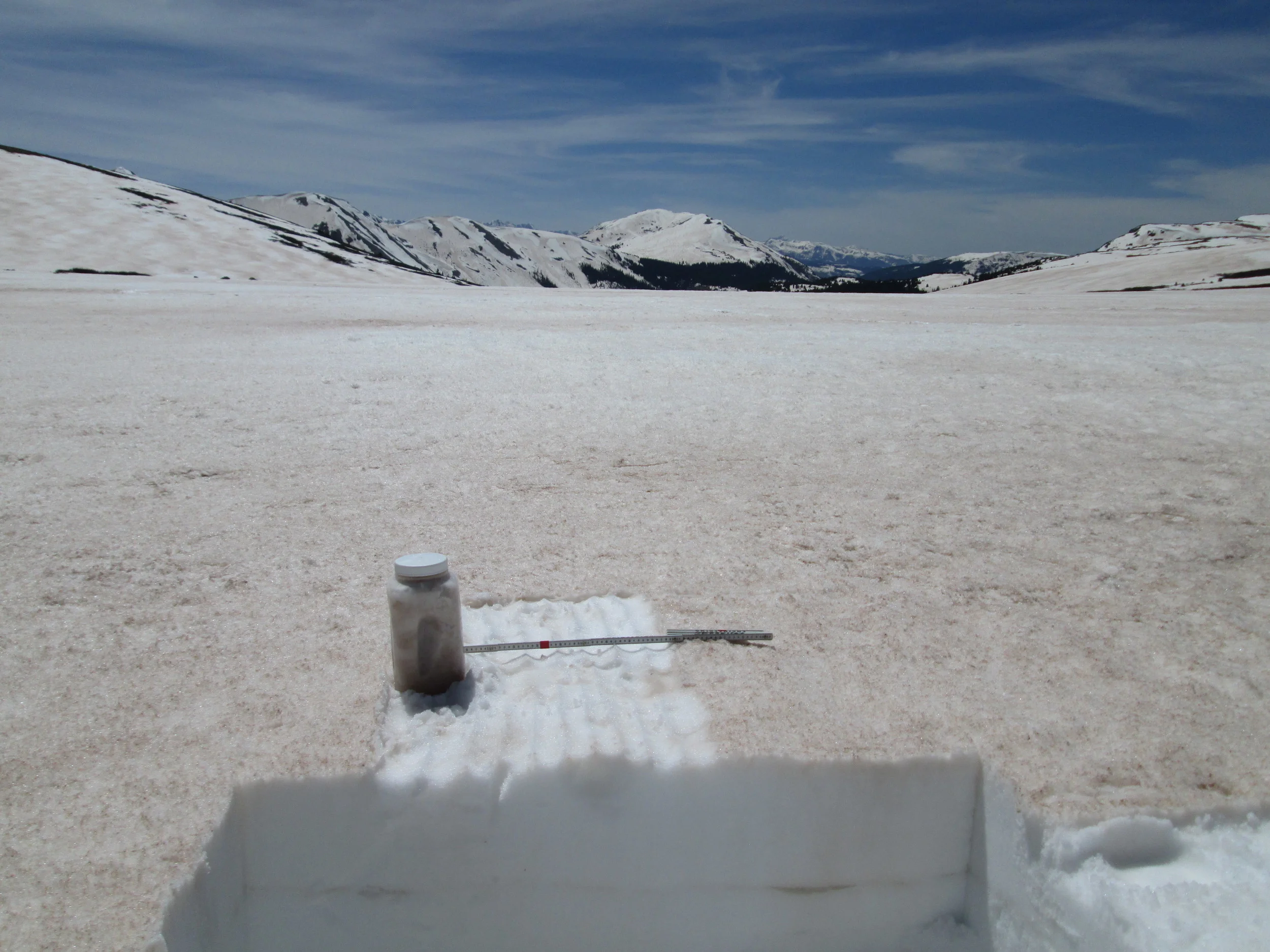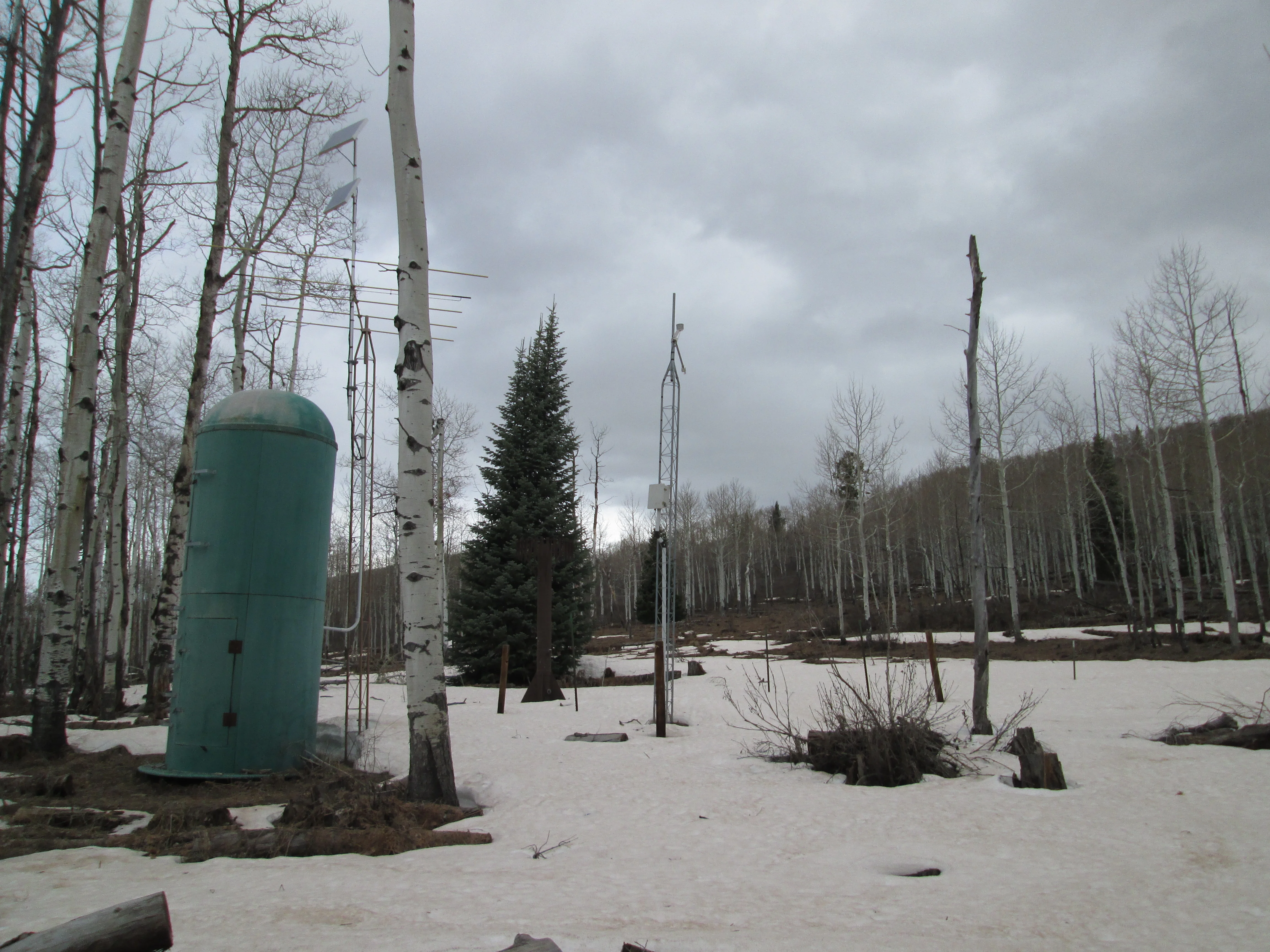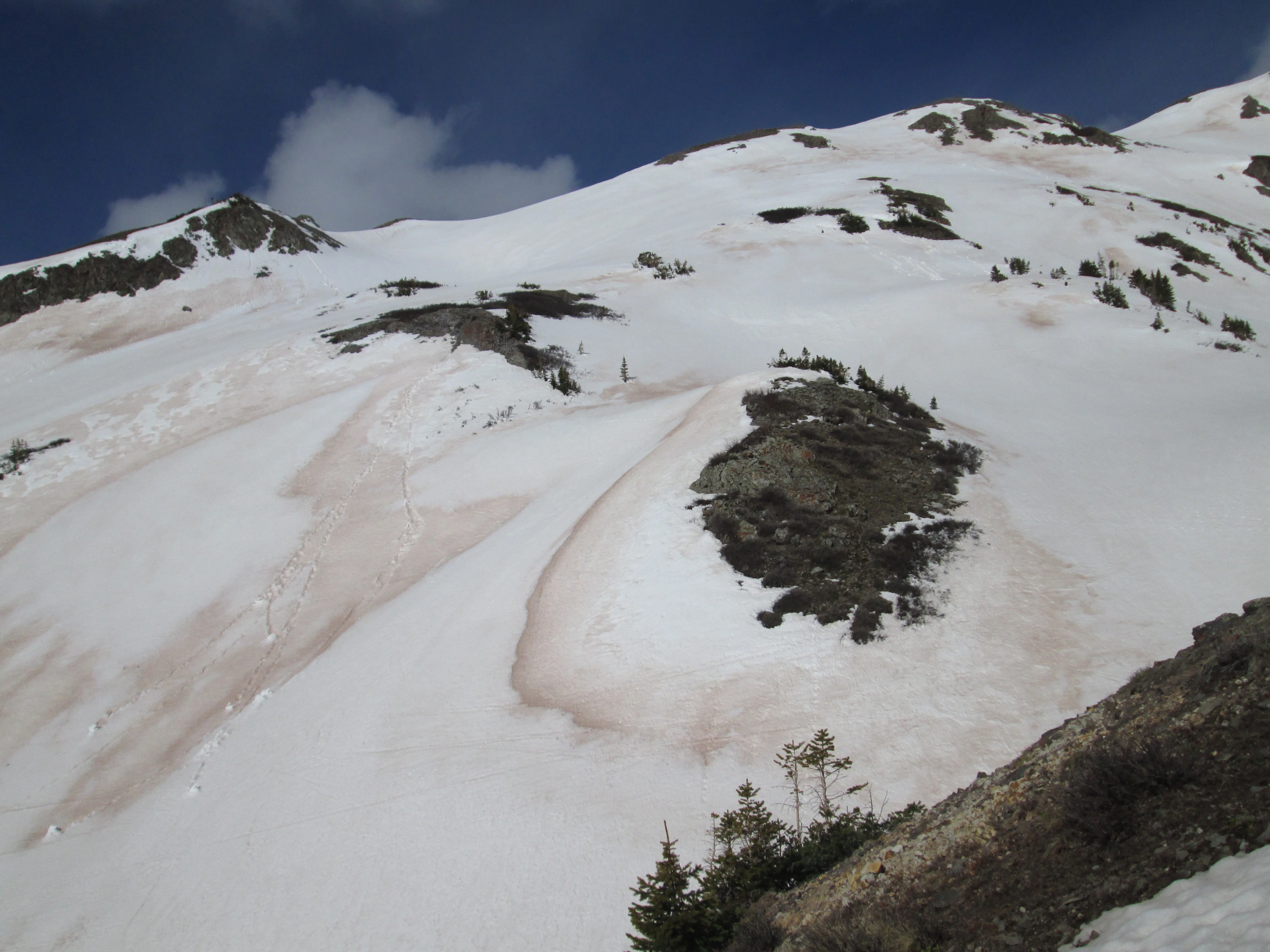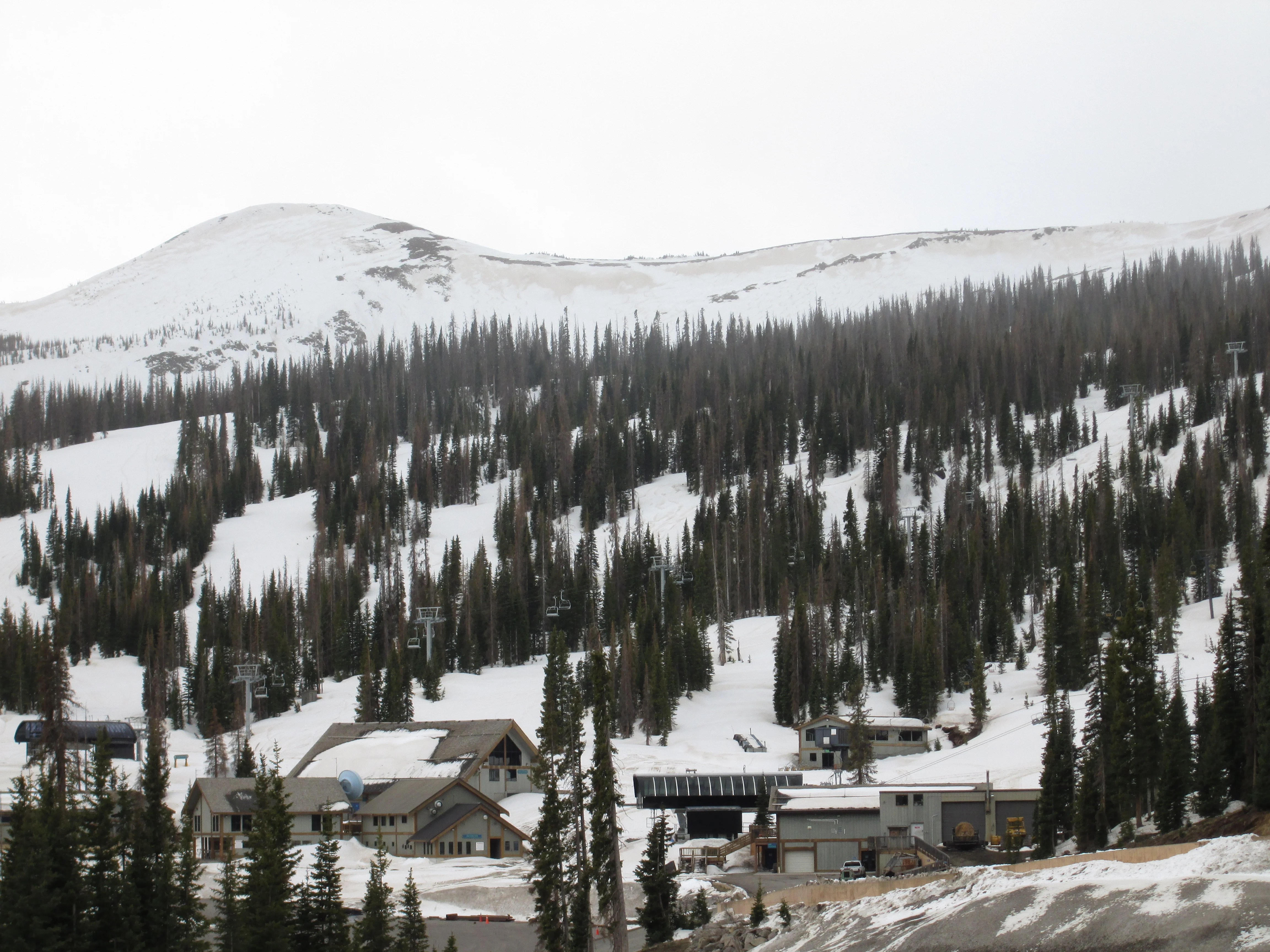APRIL 27, 2015 UPDATE – CENTRAL & NORTHERN MOUNTAINS, FRONT RANGE
SUMMARY
CODOS sites at McClure Pass, Rabbit Ears Pass, Willow Creek Pass, Berthoud Pass, Loveland Pass, Hoosier Pass, and the Park Cone site in Taylor Park were visited over April 20-22, 2015. Dust layer D3 (April 14/15), merged with layer D2 (April 8), was clearly evident in the Central Mountain sites (McClure Pass and Park Cone) underneath the recent new layer of clean snow (CSAS Storm #12) and dust intensity in those locales could attain “AVG Dust” with just a few additional events. D3 was weaker at Northern Mountain sites (Rabbit Ears Pass and Willow Creek Pass) and at Berthoud Pass, and very faint, even ambiguously present, in our other Front Range locales (Grizzly Peak and Hoosier Pass). Dust intensity remains in the “MIN Dust” classification in those areas. Dust was not apparent at the snowpack surface in any of these locales, during this circuit, and where dust was present it was well-buried under 4-15” of clean snow containing from 0.5” to 3.2” of water equivalent. Snowpack temperatures were near 0 C in the lower snowcover and cooler near the surface, a typical temperature profile pattern for late April at these sites. This Update presents text and photographs to complement the new snow profiles, snowpack SWE plots, and hydrographs posted to the specific webpages for these CODOS sites (all CODOS site webpage links are shown at the top of the CODOS Program home page , and on all site pages).
McCLURE PASS – APRIL 20
Spring was well underway at McClure Pass and snowcover at the CODOS site and at the adjacent McClure Pass Snotel had completely disappeared prior to the recent winter storm (CSAS Storm #12). Only post-D3 new snow covered the ground at that site so an alternative snowpit site was selected on a nearby north-facing slope where old snow remained, enabling the verification of presence/absence of dust layers.

